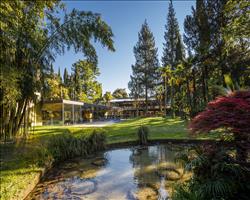Riva History
The architectural and cultural history of Riva, Italy. Churches, castles, origins and historic figures.
‘I am quite fascinated’ were the words of writer Thomas Mann on his visit to the historically significant town of Riva del Garda. He reflects on the extraordinarily poignant feelings which were stirred in him during his time on the lake and he was not alone in his praise of this idyllic spot, Franz Kafka and Friedrich Nietzsche were also regular visitors to the town. Now one of the most popular holiday destinations on the lake, Riva has had a rich history of invasion and defence and played an integral part in the history of the lake.
Due to the strategic location in the North, Riva has had a large amount of control over the Northern half of the lake as well as influencing trade routes both North and South of the Alps. This location meant that Riva was at the forefront of a number of invasions and battles. The fortifications that were integral to the towns defence have stood the force of time and today stand as telling remains of the strategic importance of this town throughout the centuries.
Rocca
An important measure of defence, the Rocca has stood in the town since the 12th century. The building was further enforced by the Della Scala family in the 14th century for defence against Hungarian invasion. The building that stands today dates back to the Hapsburgs who converted several buildings in to Austrian barracks during their time of rule. The museum inside the Rocca today holds numerous exhibitions about the history of the area.
The Bastion
The Bastion is another example of the measures of defence that were taken to protect the town against invasion. This fortress was built in 1508 when the power of the Venetian republic was diminishing. Now in ruins after invasion by the French in the 18th century the building holds a museum with archaeological exhibitions, an art gallery and collections of weapons, prints and books for visitors to fully immerse themselves in its deep military history.
Torre Apponale
Situated in the Piazza III Novembre this tower has had a number of different uses since it was built in 1220 as a defence for the town. With salt and grain storage room at its base, it was also used as a prison and an observation post during WW1.
Religious Buildings
There are a number of churches in the town dating throughout the middle-ages. S. Maria is the oldest, dating back to 1106 as evidenced in a document from the period. S. Michele and S. Tommaso date back to the 12th century. The small Romanesque church of S. Tommaso has a cone-shaped bell tower with mullioned windows and its interior is richly adorned with frescoes dating back to the 14th century. The later 17th century L’Inviolata church has an interesting octagonal layout and offers one of the finest examples of baroque architecture in the area. One of the most modern churches in the area is the S. Barbara church which was built by miners in 1935, situated on the rocks of Mount. Rochetta it signifies the enduring religious culture of the lake.
History in Resorts Near Riva
More Riva Holiday Resources
















